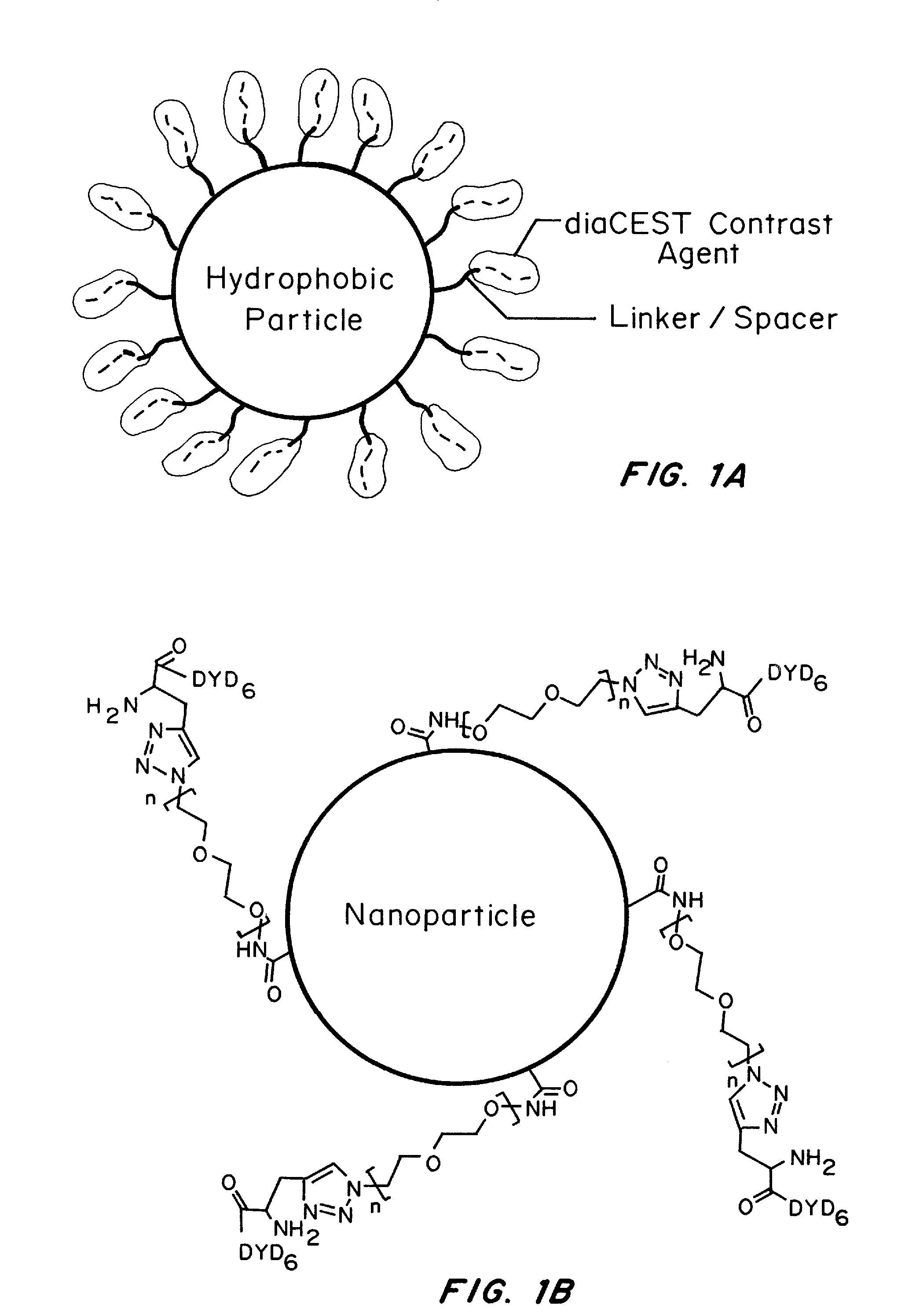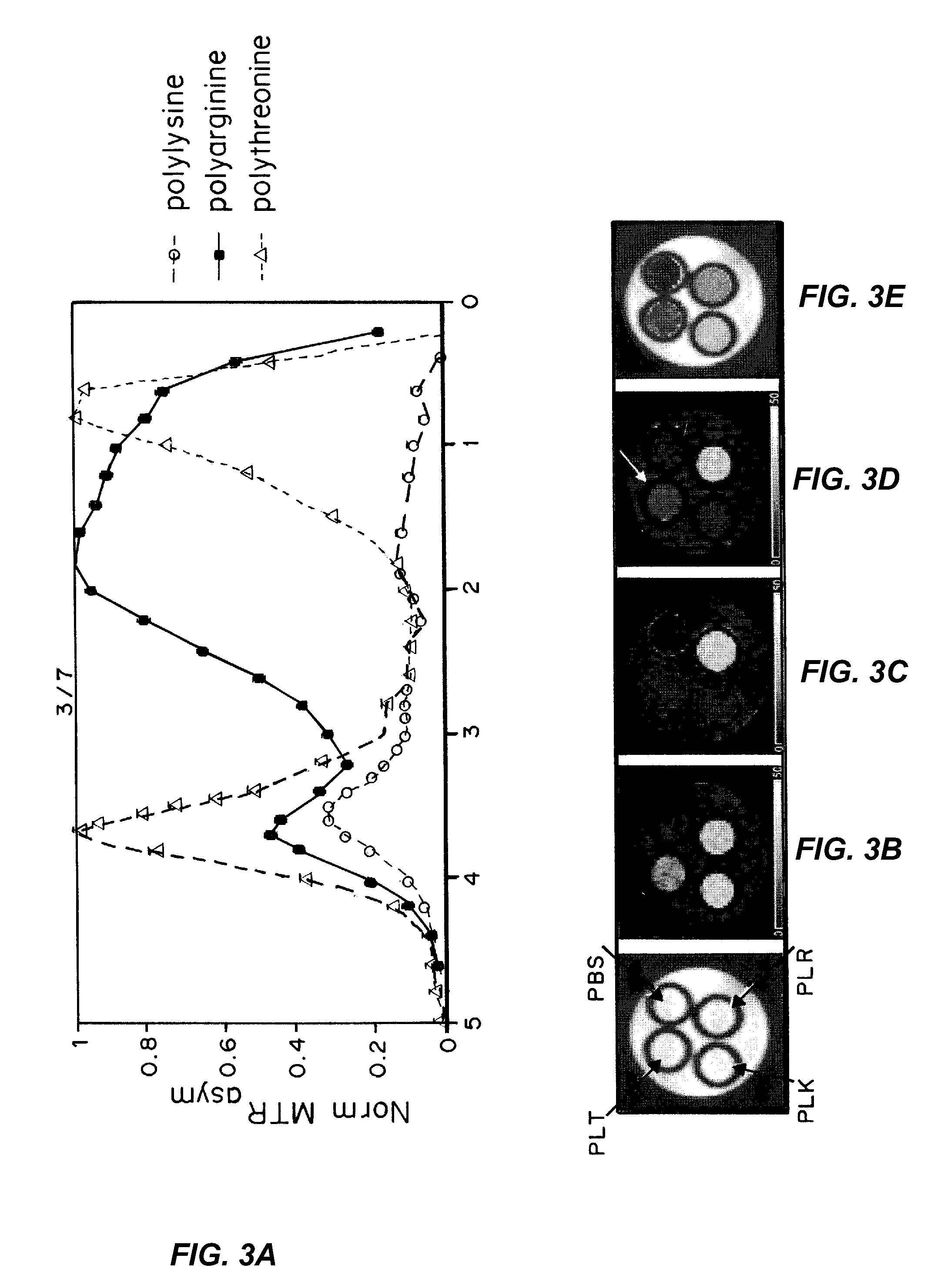Nanoparticles for magnetic resonance imaging tracking and methods of making and using thereof
a magnetic resonance imaging and nanoparticle technology, applied in the field of nanoparticles for magnetic resonance imaging tracking and methods of making and using thereof, can solve the problems of difficult to overcome metastases, difficult to form polymeric diacest, and difficult hydrophilic agent use, and achieve the effect of efficient incorporation of diacest agents
- Summary
- Abstract
- Description
- Claims
- Application Information
AI Technical Summary
Benefits of technology
Problems solved by technology
Method used
Image
Examples
example 1
Preparation of DiaCEST Liposomes
[0232]Drug-containing liposomes were prepared with the poly(ethylene) glycol (PEG) concentration varied systematically using the thin film hydration method. 25 mg of lipid dissolved in chloroform was dried, with the resultant thin film hydrated using 1 ml barbituric acid (BA) to form multilamellar vesicles. The mixture was then annealed at 55-65° C., sonicated, and subsequently extruded through stacked polycarbonate filters. Doxorubincin (DOX) was then loaded into the liposomes remotely.
example 2
Preparation of DiaCEST Polymeric Particles
[0233]Polymeric particle preparation: The peptide contrast agent, propargylglycine-W-(DYD)6-NH2, was synthesized on a microwave-assisted peptide synthesizer Libertyl (CEM, USA). The CEST nanoparticles were then prepared by standard coupling chemistry. NH2PEG-N3 was coupled to carboxylates on the surface of polystyrene (PS) particles in the presence of EDC and NHS in 200 mM sodium borate buffer pH 7.8 at RT. Propargylglycine-W-(DYD)6-NH2 peptide was coupled with PS-PEG-N3 in the presence of catalytic amount of CuAcAc, TBTA, and excess ascorbic acid in sodium phosphate buffer pH 7, under nitrogen, using click chemistry. Biodegradable CEST nanoparticles based on the polymer of poly(lactic-co-glycolic) acid-co-PEG (PLGA-PEG) were synthesized using a similar procedure and formulated using a oil-in-water emulsion method.
example 3
Animal Preparation
[0234]Five million CT26 cells were injected subcutaneously into the right flank of a mouse and allowed to grow for ˜10 days prior to MRI.
[0235]CEST Imaging
[0236]Mice were anesthetized using isoflurane, positioned in a 11.7 T horizontal bore Bruker Biospec scanner, and imaged before and 24 h after intravenous administration of 100 ul of DOX / BA PEGylated liposomes. CEST images were acquired through collection of two sets of saturation images, a water saturation shift referencing (WASSR) set for B0 mapping and a CEST data set for characterizing contrast. For the WASSR images, the saturation parameters were tsat=500 ms, B1=0.5 uT, TR=1.5 sec with saturation offset incremented from −1 to +1 ppm with respect to water in 0.1 ppm steps.
[0237]For the CEST images, tsat=3 sec, B1=4.7 uT, TR=Ssec, with offset incremented from −6 to +6 ppm (0.3 ppm steps) with a fat suppression pulse. The acquisition parameters were TR=5.0 sec, effective TE=21.6 ms, RARE factor=8. The CEST imag...
PUM
 Login to View More
Login to View More Abstract
Description
Claims
Application Information
 Login to View More
Login to View More - R&D
- Intellectual Property
- Life Sciences
- Materials
- Tech Scout
- Unparalleled Data Quality
- Higher Quality Content
- 60% Fewer Hallucinations
Browse by: Latest US Patents, China's latest patents, Technical Efficacy Thesaurus, Application Domain, Technology Topic, Popular Technical Reports.
© 2025 PatSnap. All rights reserved.Legal|Privacy policy|Modern Slavery Act Transparency Statement|Sitemap|About US| Contact US: help@patsnap.com



